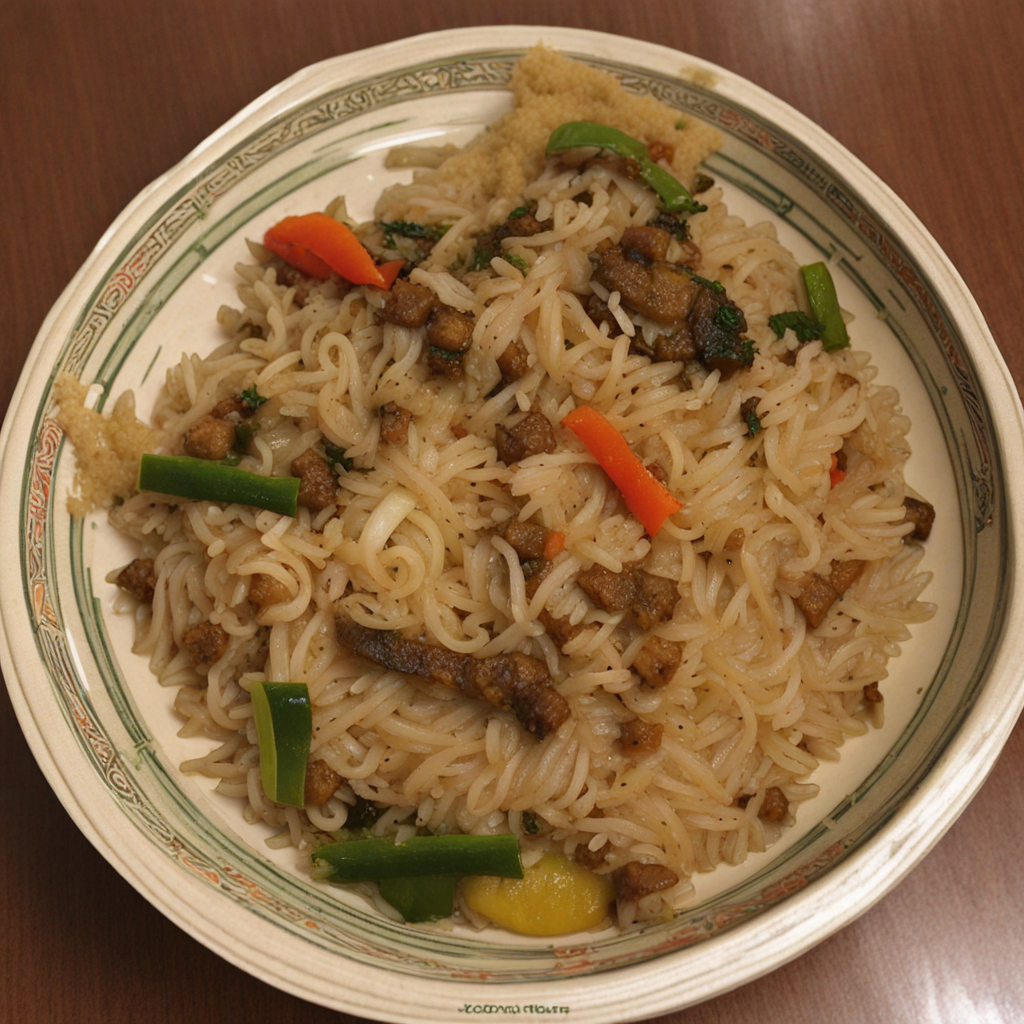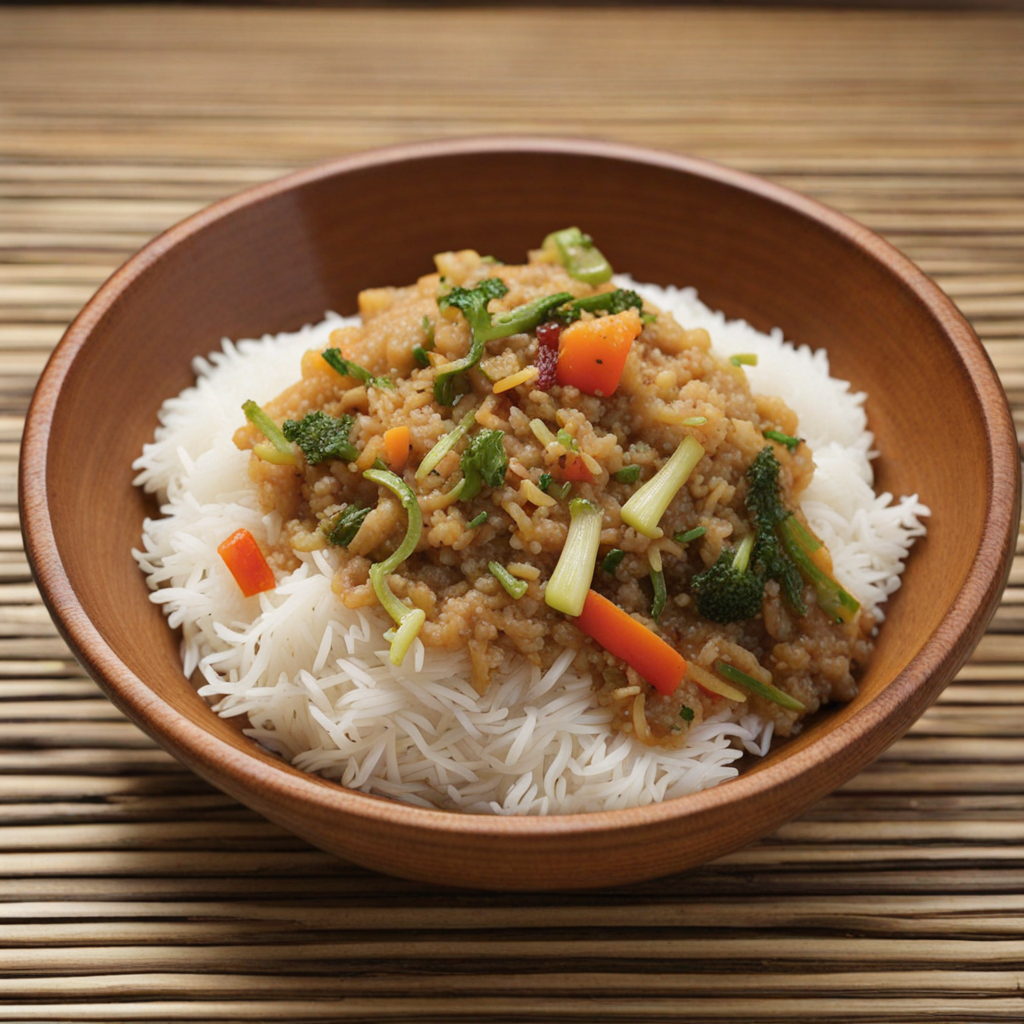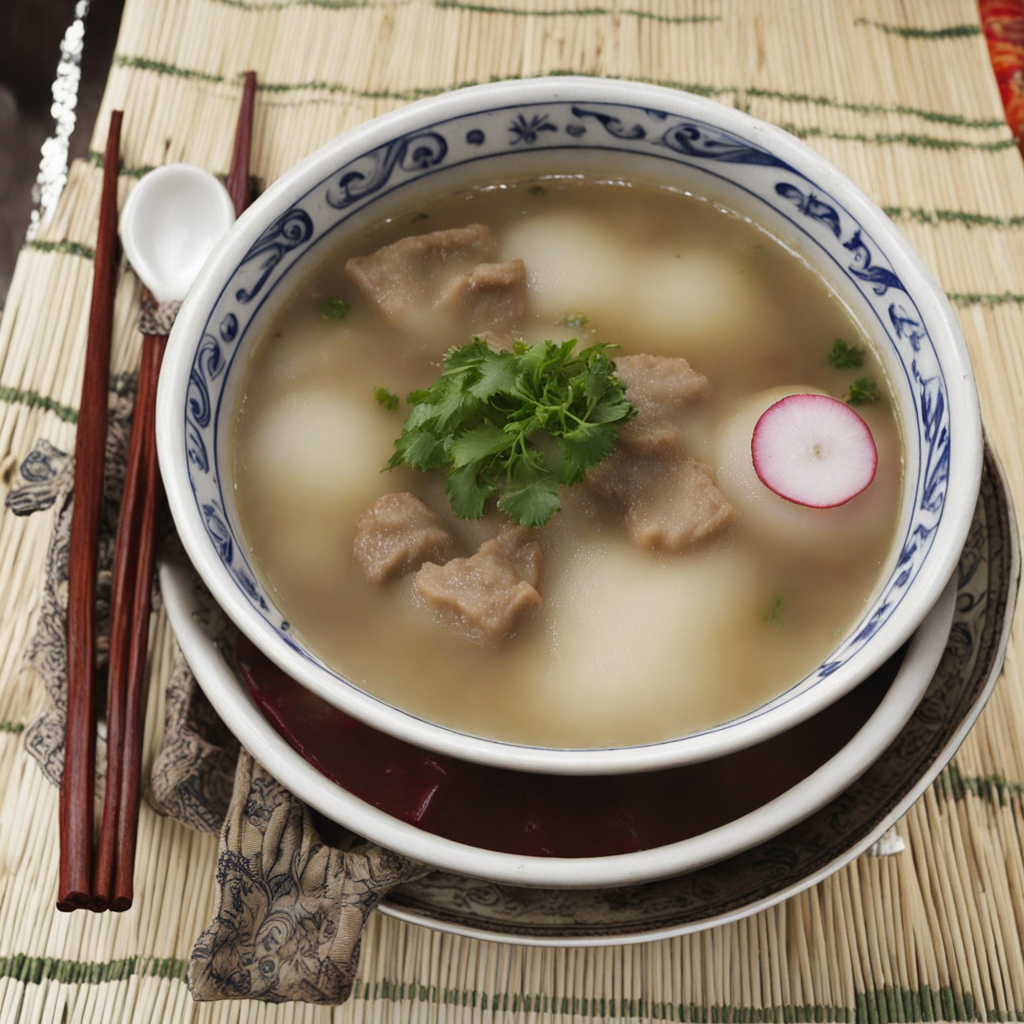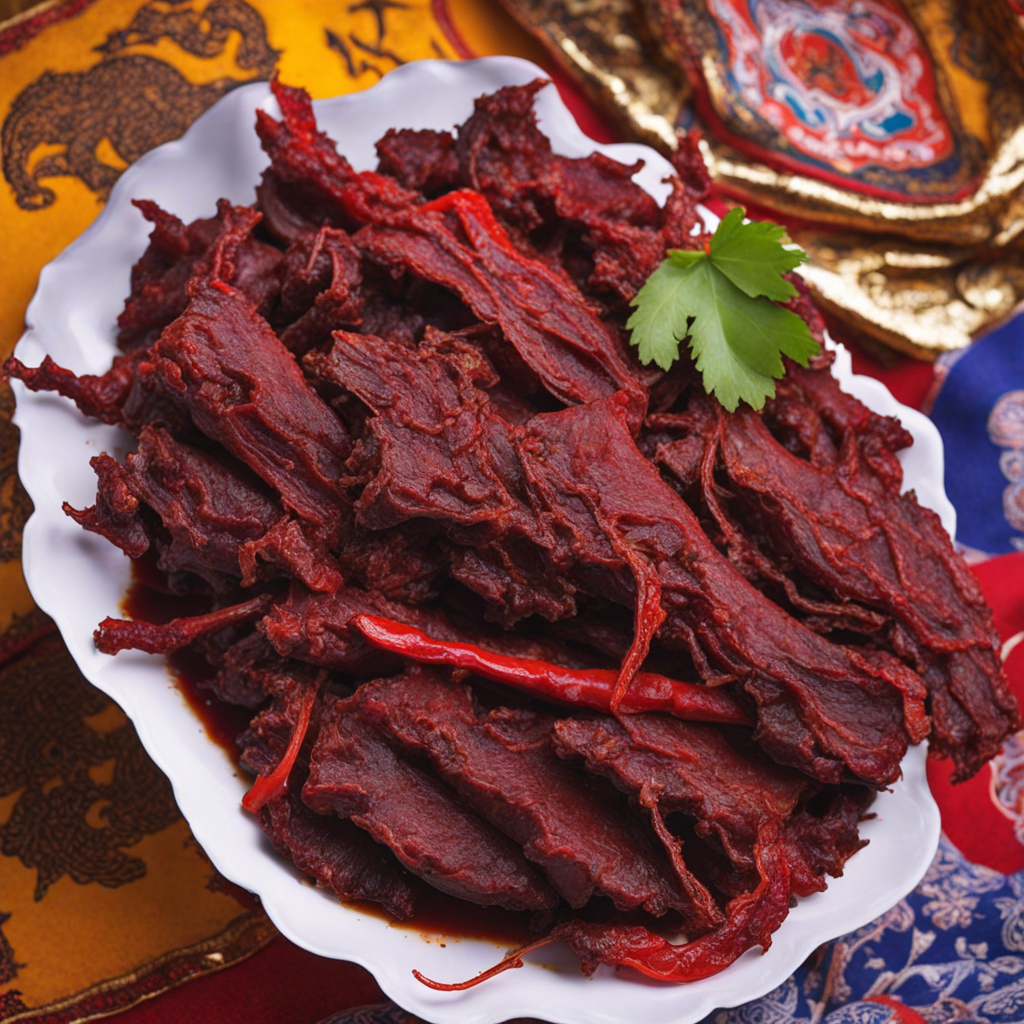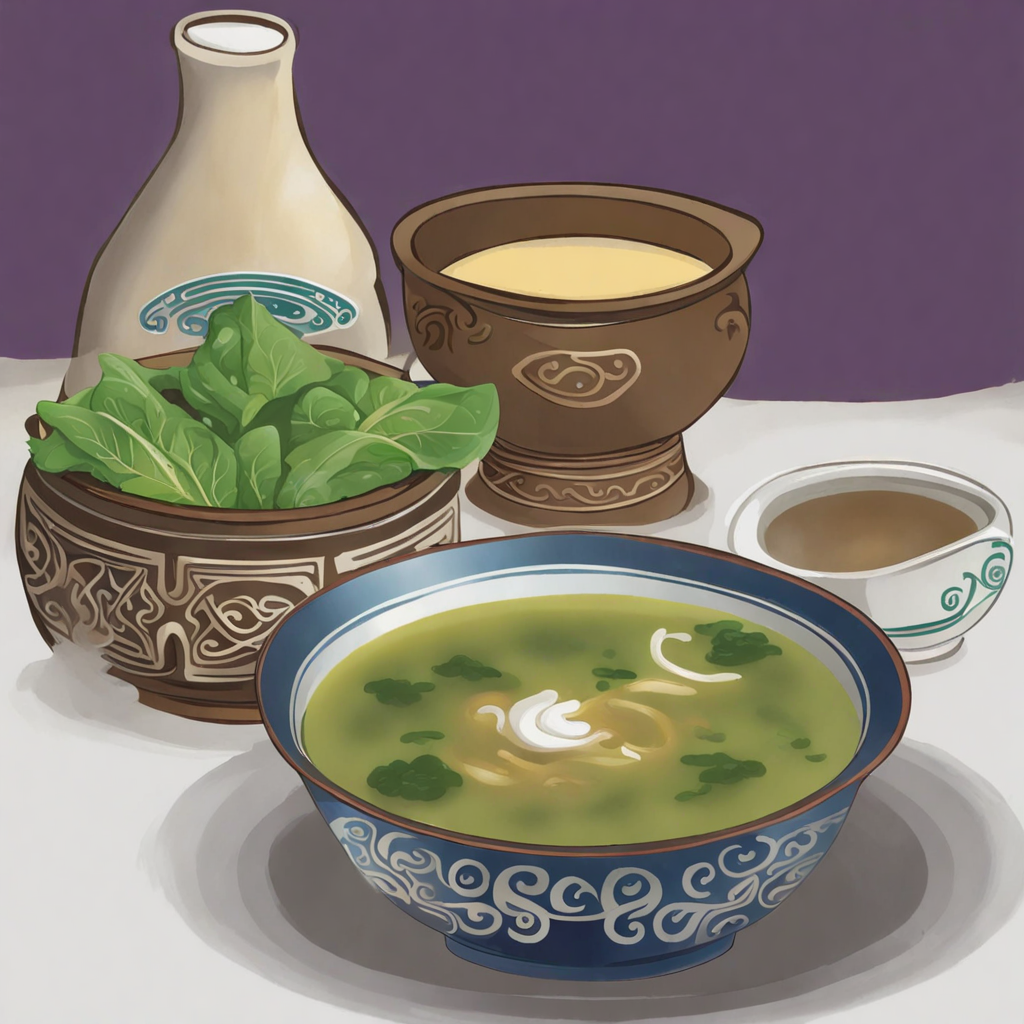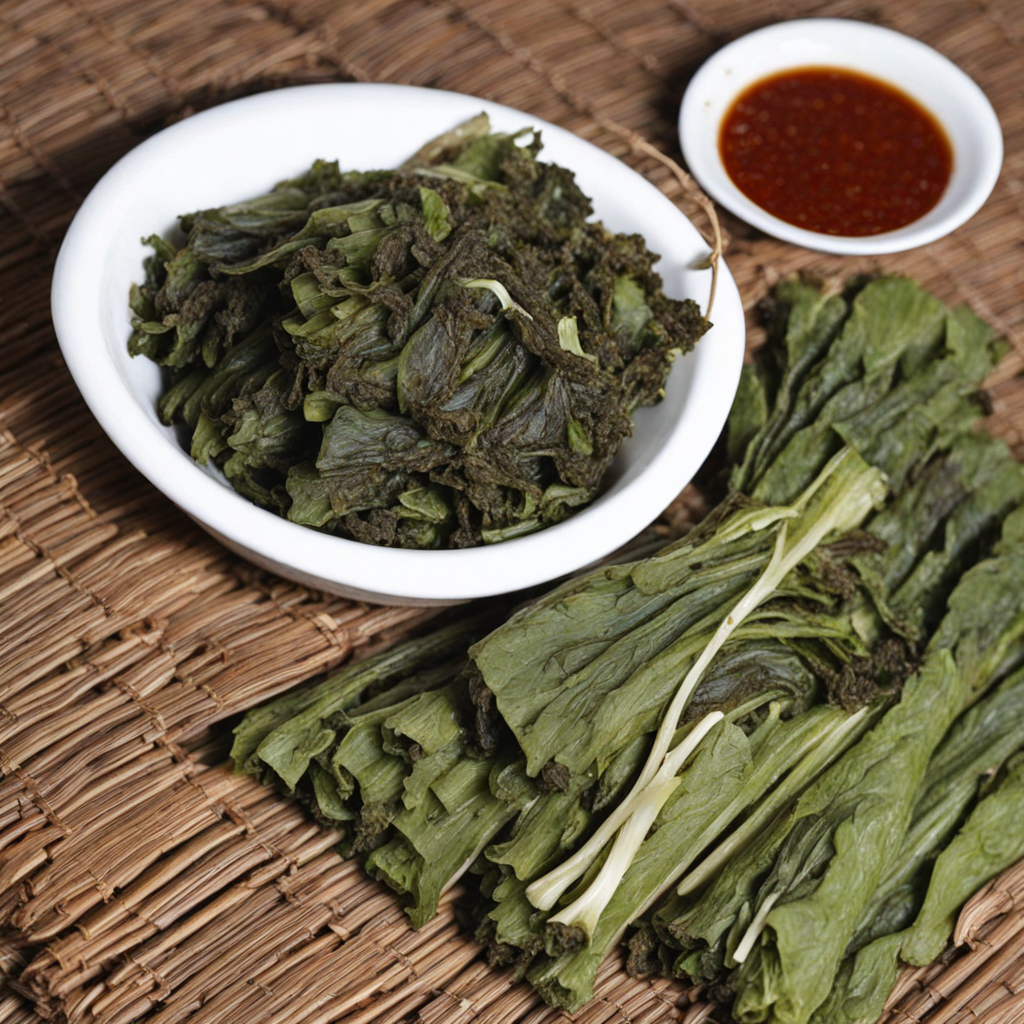Zow Shungo
Zow Shungo is a delightful dish from Bhutan that beautifully embodies the country's culinary heritage. This traditional meal is a combination of rice and various vegetables, often enhanced with a medley of spices that celebrate the region's rich agricultural bounty. The rice is typically steamed to perfection, providing a fluffy and aromatic base that complements the vibrant colors and textures of the vegetables, which can include seasonal greens, root vegetables, and sometimes mushrooms. The addition of Bhutanese chili peppers adds a signature kick, making each bite a flavorful experience. The dish is not just about taste; it is also a reflection of Bhutanese culture, emphasizing the importance of sustainability and local ingredients. The vegetables used in Zow Shungo are often sourced from local farms, ensuring freshness and a connection to the land. This dish can be served as a standalone meal or as a side to accompany other Bhutanese staples, such as Ema Datshi, providing a wholesome option for vegetarians and meat lovers alike. What sets Zow Shungo apart is its versatility and the way it allows for personal expression in cooking. Each family or cook may have their own unique twist, perhaps adding different herbs or varying the spice level according to preference. The dish is not only nourishing but also a celebration of community and sharing, often enjoyed during gatherings and special occasions. Discovering Zow Shungo is not just about tasting a new dish; it's about engaging with the heart and soul of Bhutanese cuisine.
How It Became This Dish
The Culinary Journey of 'ཟོའུ་ཤུང་གོ།' (Zow Shung Go) in Bhutan #### Origins 'ཟོའུ་ཤུང་གོ།' (Zow Shung Go), a quintessential dish from Bhutan, encapsulates the essence of the country's rich culinary heritage. The name itself translates to "barley bread" in Dzongkha, the national language of Bhutan. This dish is deeply intertwined with the agricultural practices and dietary preferences of the Bhutanese people, especially in the context of their staple food sources. Barley has been a fundamental crop in Bhutan for centuries, particularly in the high-altitude regions. It thrives in the harsh climatic conditions of Bhutan's mountainous terrain, making it a reliable source of sustenance for rural communities. The cultivation of barley dates back to the early agrarian societies of the Himalayas, where it was considered a vital part of the diet due to its adaptability and nutritional value. #### Cultural Significance Zow Shung Go is more than just a dish; it embodies the cultural identity and communal lifestyle of the Bhutanese people. Traditionally, the preparation of this dish is a family affair, often involving the collective effort of women and children in the household. The act of making Zow Shung Go is not merely culinary; it is a ritual that strengthens familial bonds and fosters a sense of community. In Bhutanese culture, food plays a significant role in various festivals and religious ceremonies. Zow Shung Go is often prepared during auspicious occasions, symbolizing abundance and the spirit of sharing. It is common to see families offering this dish to guests as a gesture of hospitality, reflecting the deep-rooted Bhutanese values of warmth and generosity. #### Ingredients and Preparation The primary ingredient in Zow Shung Go is barley flour, which is typically made from roasted barley grains (known as 'zow' in Dzongkha). The roasting process enhances the flavor and nutritional profile of the barley, imparting a unique nuttiness to the dish. This flour is combined with water and a pinch of salt to create a dough, which is then shaped into flatbreads or dumplings. Traditionally, the dough is steamed or boiled, although variations exist across different regions of Bhutan. Some families may choose to fry the dough, resulting in a crispy exterior that contrasts beautifully with the soft interior. The versatility of Zow Shung Go allows it to be served with an array of accompaniments, such as spicy chili sauces (ezay), pickles, or vegetable curries, enhancing the overall dining experience. #### Development Over Time As Bhutan has evolved over the centuries, so too has its culinary landscape, and Zow Shung Go has undergone transformations that reflect broader changes in society. With the advent of modern technology and globalization, access to diverse ingredients has increased, allowing for innovative interpretations of traditional dishes. In urban areas, Zow Shung Go has seen adaptations that incorporate other grains, such as wheat or millet, catering to changing tastes and dietary preferences. While the traditional preparation methods remain cherished, many Bhutanese now enjoy Zow Shung Go in more contemporary forms, such as sandwiches or wraps, filled with an assortment of toppings, from local cheeses to fresh vegetables. Despite these adaptations, the essence of Zow Shung Go as a symbol of Bhutanese identity remains intact. The dish continues to evoke nostalgia for many Bhutanese, who associate it with their childhood and family gatherings. It serves as a reminder of the importance of food in cultural expression and the preservation of heritage in an ever-changing world. #### Zow Shung Go in Contemporary Bhutan In recent years, the promotion of sustainable agriculture and the farm-to-table movement has reignited interest in traditional Bhutanese food. As a result, more people are rediscovering the significance of locally sourced ingredients, including barley. There has been a resurgence in the cultivation of heritage barley varieties, which not only supports local farmers but also enhances the biodiversity of Bhutan's agricultural landscape. Culinary tourism has also played a role in elevating Zow Shung Go's status within Bhutan's food scene. As international visitors flock to the kingdom to experience its unique culture and cuisine, Zow Shung Go has gained recognition beyond its borders. Food festivals and cooking classes dedicated to traditional Bhutanese dishes often feature Zow Shung Go, allowing travelers to engage with the local culture and learn the art of its preparation. #### Conclusion In conclusion, Zow Shung Go is a dish steeped in history and cultural significance, reflecting the agricultural roots and communal values of the Bhutanese people. From its origins as a staple food in the highlands to its contemporary adaptations, Zow Shung Go exemplifies the resilience and adaptability of Bhutanese cuisine. As the world becomes more interconnected, this dish serves as a bridge, connecting past traditions with present practices and fostering a greater appreciation for Bhutan's culinary heritage. Through Zow Shung Go, we not only taste the flavors of Bhutan but also savor the stories and traditions that have shaped this remarkable nation.
You may like
Discover local flavors from Bhutan


